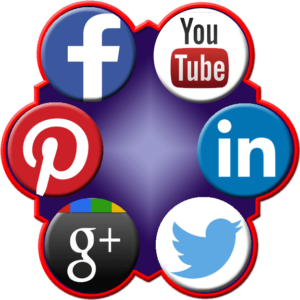Less than 1% of visitors to search engines will go past the first page to find what they’re looking for. That means if your brand isn’t already on their mind, it had better be on the first page of search engine results. So how do you improve and rank higher on SERPs? Here are a few tips to propel your site from anonymity to renown!
Optimizing Your On-Site SEO

The single most impactful way to rank higher on SERPs is to optimize your on-page SEO. Fortunately, there are tools available to help. Depending on the content delivery service you utilize, there are built-in SEO plugins to help optimize your content. For example, if your site is on WordPress, you can use the Yoast plugin to make sure your content is properly optimized for SEO before you publish it.
It goes without saying, but you’ll also want to make sure your site has the proper HTML markup, alt tags on images, the right H1/H2/H3 use of headlines & tags, and no grammatical or spelling errors. Finally, your content should be written for humans–not robots. If your copy is unintelligible, stuffed with keywords, or otherwise dubiously presented, you’re doing more harm than good.
A Better Website Will Help You Rank Higher on SERPs-What Does That Mean?
In addition to optimizing your on-site SEO, the most obvious way to rank higher on SERPs is to improve your website. But what does that mean exactly? Does that just mean creating a more efficient website? Yes and no.

First of all, as mentioned, getting to the first page of search engine results requires a considerable amount of SEO work. That means not only choosing the right keywords for your site, but the right density, as well as the proper layout, appearance, functionality, and accessibility. If you have dead links, for example, your site will never reach the first page. If your keywords are off-base from what your brand does, you’ll never reach the first page.
However, if your website is securely hosted, full of reputable backlinks and properly formatted images, you’ll be on your way to moving up the rankings. At the same time, while your site may rank on the first page today, it doesn’t mean it will tomorrow. For best results, continually add to and update your page with engaging, keyword-driven content, connect and sync external accounts (like social media and Google My Business), and take advantage of other channels, like paid ads and email marketing, to drive traffic to your website.
The more search engines pick up that users are engaging, interacting, and sharing your website and content, the higher they’ll rank your domain authority. And while producing long-form content like blogs or whitepapers is more of a lead-generation tactic than SEO, it still has the potential to drive significant traffic to your website–and that’s where the higher ranking comes from.
Data & Analytics Are Your Best Resource!
Since part of ranking higher on SERPs has to do with creating better content, how do you know what content will drive traffic? That’s where data and analytics come in.

Tools like SERanking, SEMRush, and Google Analytics can give heaps of insight. Not only can they tell you how your site ranks for target keywords but they can give further insight into which keywords are driving traffic and what people are looking for. That means you can optimize your website–and content–for those keywords to keep things consistently fresh, relevant, and exciting!
Again, obtaining and maintaining a spot on the first page of SERPs is not a one-and-done process. Like most areas of life, maintaining superiority and success comes with constant hard work and improvement. That means if you want to rank higher on SERPs, you have to consistently put in the work. That means regularly auditing your content, getting feedback from your audience, making constant improvements, and of course, continuing to produce the kind of content that got you there in the first place!









